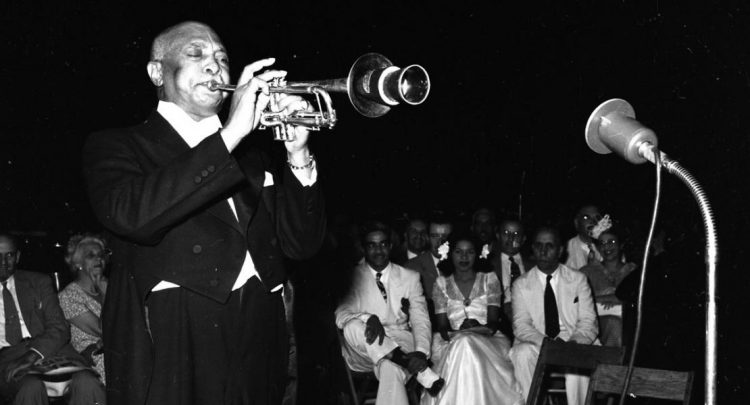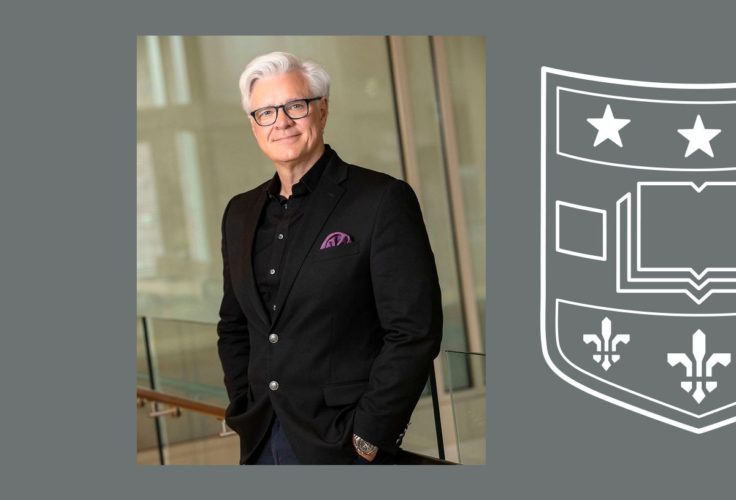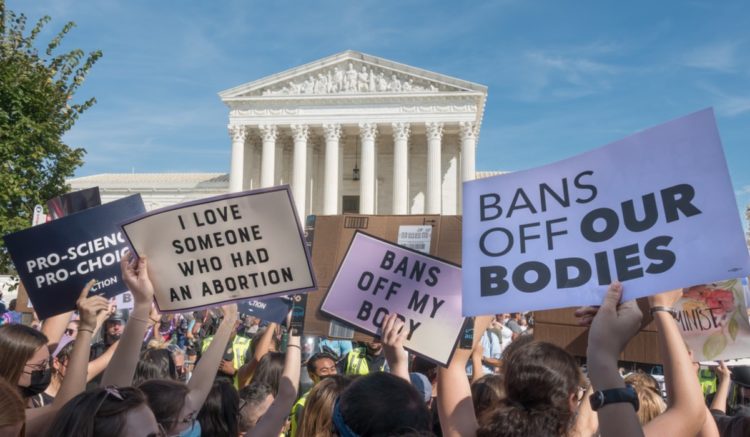Michael Wall wrote this for the Olin Blog. He is a professor of practice in marketing and entrepreneurship, and co-director of Olin’s Center for Analytics and Business Insights.

This story begins with singer and songwriter Marc Cohn and his smash hit “Walking in Memphis,” released in 1991. If you’re familiar with this song, you may recall the line “W.C. Handy, won’t you look down over me?” You may not be familiar with W.C. Handy. Before getting into him, though, another story must be told, a story that began nearly 80 years before the release of Cohn’s song.
In the early part of the 20th century in the southeastern United States, Black Americans, who were not allowed in establishments for white Americans, would get together to listen to music, dance and converse in establishments called juke joints. The juke joints attracted and inspired many Black musicians from the South, one of whom was W.C. Handy.
‘The weirdest music’

William Christopher Handy’s music was inspired by the African American musical folk traditions that he experienced in his early years of traveling and performing. In 1903, while in Clarksdale, Mississippi, heading up a band called Black Knights of Pythias, Handy encountered a guitarist at the Clarksdale train station playing what he referred to as “the weirdest music” he had ever heard.
Throughout the early 1900s, Clarksdale became ground zero for the Delta Blues as it attracted talented artists who are still famous today. Each of these artists brought their own unique flavor to the Delta Blues, enabling it to evolve as the artists interacted with each other.
Inspired by that guitarist, his historical experiences and other local artists, Handy continued to produce music and in 1912 published “Memphis Blues,” the first known title with the word “Blues” in it. That said, it was his 1914 publication of “St. Louis Blues” that became his most famous composition.
Muddy Waters

One of those artists was Muddy Waters. In 1943, Muddy boarded a bus at the Clarksdale station and headed to Chicago as part of the Great Migration, when nearly six million black Americans made their way from the South to northern cities and other parts of the US, a decision that would shape American culture and music around the world forever.
Muddy’s talent was discovered in Chicago, where he recorded his first record in 1947, helping to drive the discovery and popularity of the Blues in the North. In fact, Blues musicians could be seen during “Sunday Jam Sessions” in Chicago. The interaction helped Muddy and the Blues to spread in the US and all over the world. But the story doesn’t end there. The Delta Blues inspired many other artists, who then inspired other artists, and so on, influencing famous music from the ’60s, ’70s and beyond, all over the world.
Human interaction
Although the story thus far is about music, the point of this story is universal; it is about human interaction. More specifically, diverse interaction and how that interaction, when channeled correctly, can drive innovation that can make a positive and principled difference not only in business but also in society. This idea is supported by both science and research.
In 2011, Steve Johnson published “Where Good Ideas Come From, The Natural History of Innovation.” In it, he uses science and research to back his position that ideas are “networks” and that the success of an idea is based on two preconditions: the size of the network and the ability of the network to adopt new configurations of the idea.
We can see this concept in our exploration of Blues music. The network was indeed malleable as each artist adopted new configurations of the music they experienced. For example, W.C. Handy adopted new configurations from the guitarist playing “the weirdest music” he’d ever heard.
And although the network was small at the start of the 20th century, limited to black Americans in the southeastern US (a result of racial segregation), it became larger over time. This was a result of Muddy Waters migrating to Chicago in 1943. Racial diversity among those who listened to the Blues in Chicago and other cities helped to drive the Blues into the mainstream.
Just as the Delta Blues inspired other Black artists, it inspired white artists, including Elvis, the Rolling Stones, Bob Dylan and the Beatles. Each went on to create their own innovative style of music, linked to the origins of those that came before them. And this has continued. For example, Lenny Kravits was influenced by a diverse group of artists and groups including Led Zeppelin, Jimi Hendrix, Stevie Wonder, Curtis Mayfield, Bob Marley and the Beatles.
Research shows …
Academic and industry research has shown that the more diverse the interaction, the greater the innovation. This includes BCG’s 2018 publication “How Diverse Leadership Teams Boost Innovation” and the research of Hewlett, Marshall, Sherbin and Gonsalve, which highlighted the power of what they refer to as 2-D diversity.
The first dimension is inherent diversity, the traits you are born with. The second is acquired diversity, the traits you gain from experiences. Their research showed that 2-D firms are 45% more likely to report market share growth from the previous year and 70% more likely to capture new market revenue.
As a person who lives across academia and the practice of business, I often challenge myself, my students, and my peers to find new ways to solve complex problems. This often starts with knowing what questions to ask. This story sheds light on questions we can all ask.
How can we grow our network and, in the process, make it more diverse, allowing for new ideas to form and existing ideas to improve? How do we drive more interaction in the network to create more ideas and better improve existing ones? If we each can work to answer these questions then perhaps it will unlock opportunities to solve not only complex business problems but also complex social and civic ones as well.
Top photo: W. C. Handy playing at the fifth annual American Negro Music Festival in St. Louis’ Sportsman’s Park in 1944. (Source: State Historical Society of Missouri)












